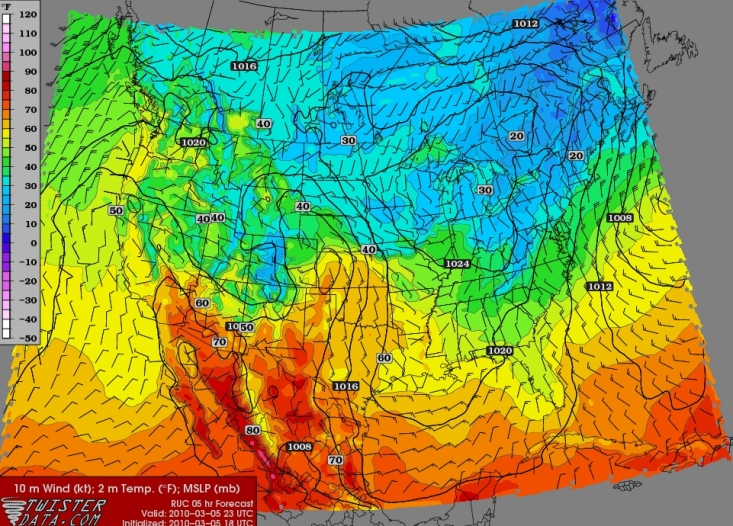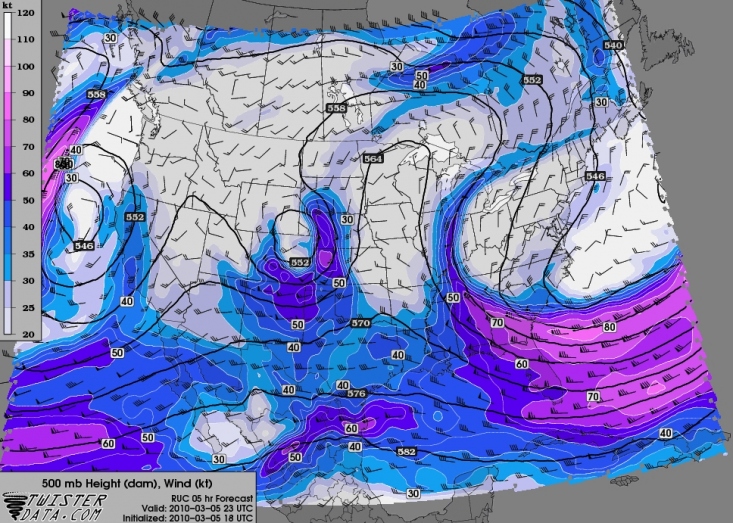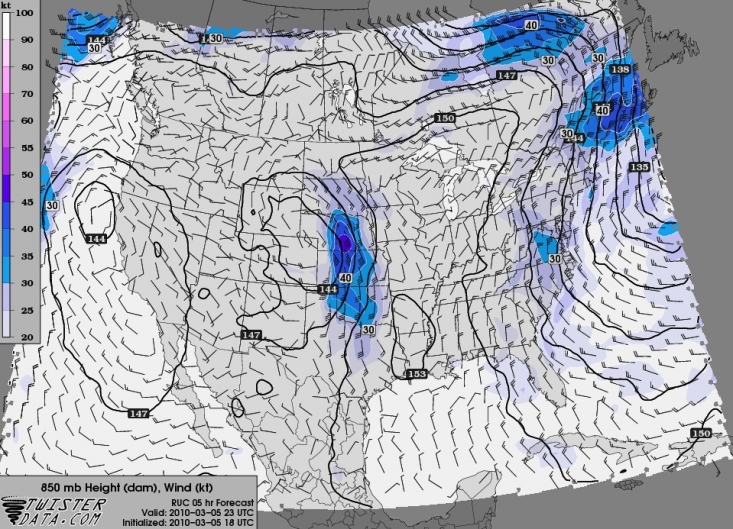Een redelijk georganiseerd maar toch compact stormsysteem zal later op de middag het westen van Kansas en Nebraska aandoen. Hierbij bestaat er een kans voor onweer en mogelijk ook een aantal funnel clouds of tornado's. Dat is de eerste keer dit jaar voor the Plains. De instabiliteit in de lucht zal gelimiteerd blijven en afhankelijk van de warmte die overdag op zal bouwen, toch is er meer dan voldoende windschering aanwezig waardoor er potentieel rotatie kan onstaan.



Bron: TornadoVideos.net



...No svr tstm areas forecast...
...swrn neb/wrn ks...
Afternoon water vapor imagery shows a potent vorticity maximum
rotating newd around parent upper system which should continue to
pivot newd across wrn into cntrl parts of ks and neb this afternoon
into tonight. an associated midlevel wind maximum of 50-60 kt
/noted as low as 4 km agl per grenada co profiler/ will accompany
this vorticity maximum ewd/newd...enhancing deep-layer sly flow
field across the region.
Boundary layer moisture will remain limited through the remainder of
the diurnal heating cycle with dewpoints in the low/mid 40s.
however...steep low to midlevel lapse rates will largely contribute
to further destabilization of air mass this afternoon where mlcape
may approach 200-400 j/kg.
Latest visible satellite imagery indicates deepening convection
occurring within deeply-mixed boundary layer along subsequent cold
frontal surges...one just s of the i-70 corridor of ern co...and the
other over far sern co. this activity should continue to intensify
this afternoon as leading cold front pushes farther ewd into wrn ks.
with time...a broken band of tstms may evolve from parts of swrn neb
into wrn ks. the most likely hazard appears to be hail /some
possibly reaching severe criteria/ given the steep lapse rates and
cool thermodynamic profiles. a brief tornado also remains possible
this afternoon with any more intense tstms that remain colocated
with surface low developing nnewd along cold front. here...steep
low-level lapse rates will coincide with a higher concentration of
ambient vertical vorticity.
Bron: spc.noaa.gov

 [USA] Onweersverwachting 5 maart 2010
[USA] Onweersverwachting 5 maart 2010




